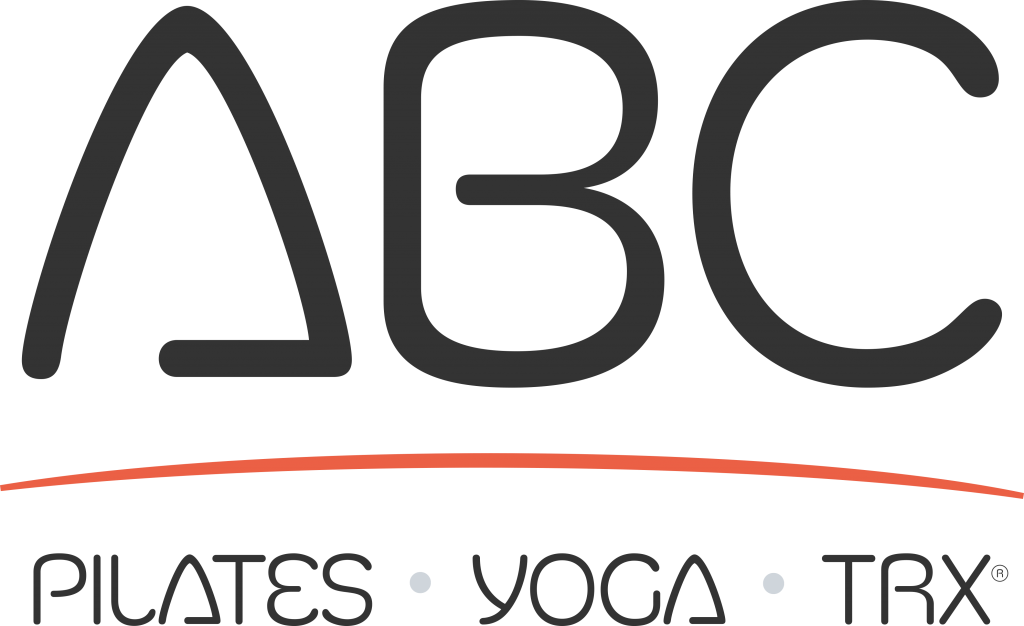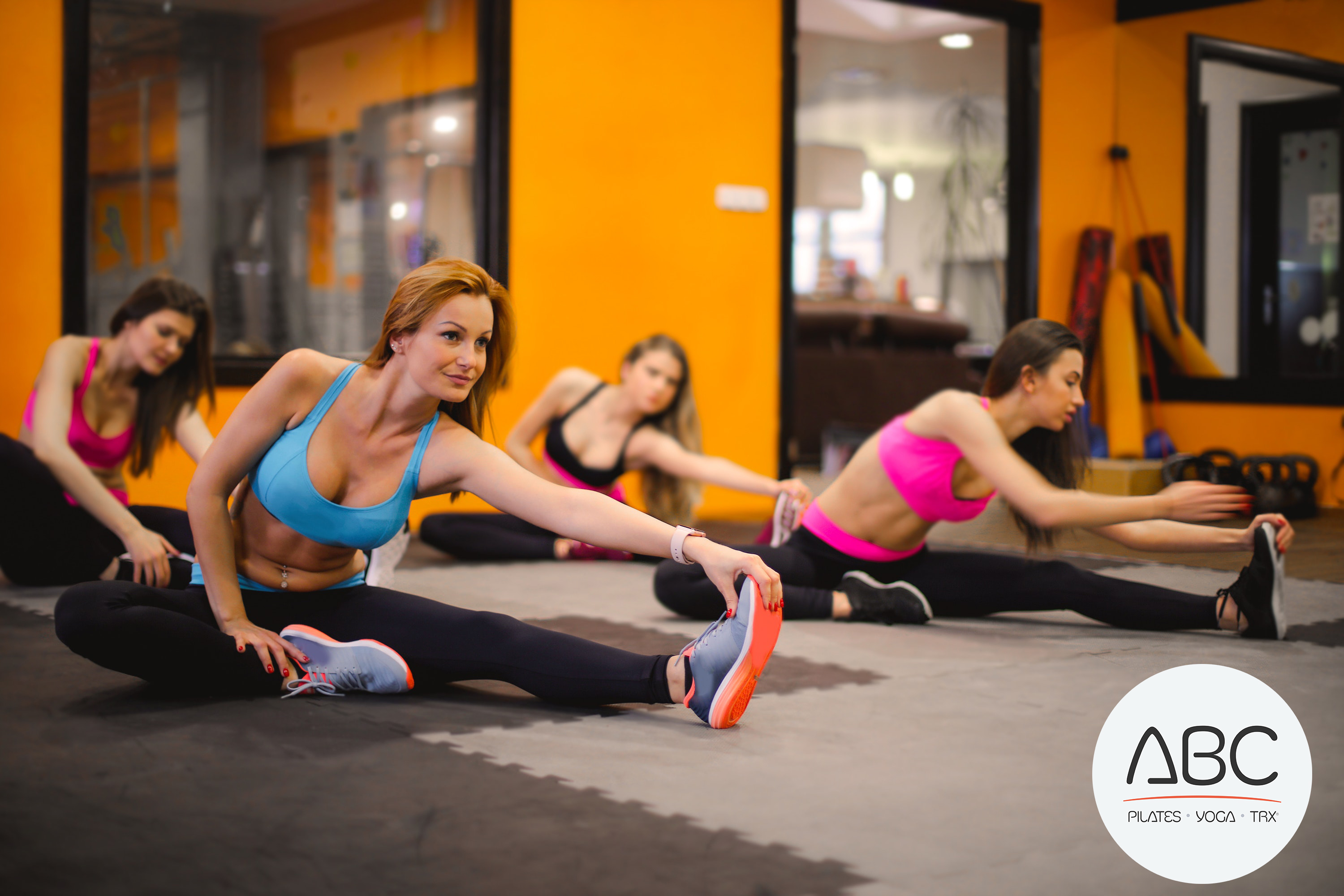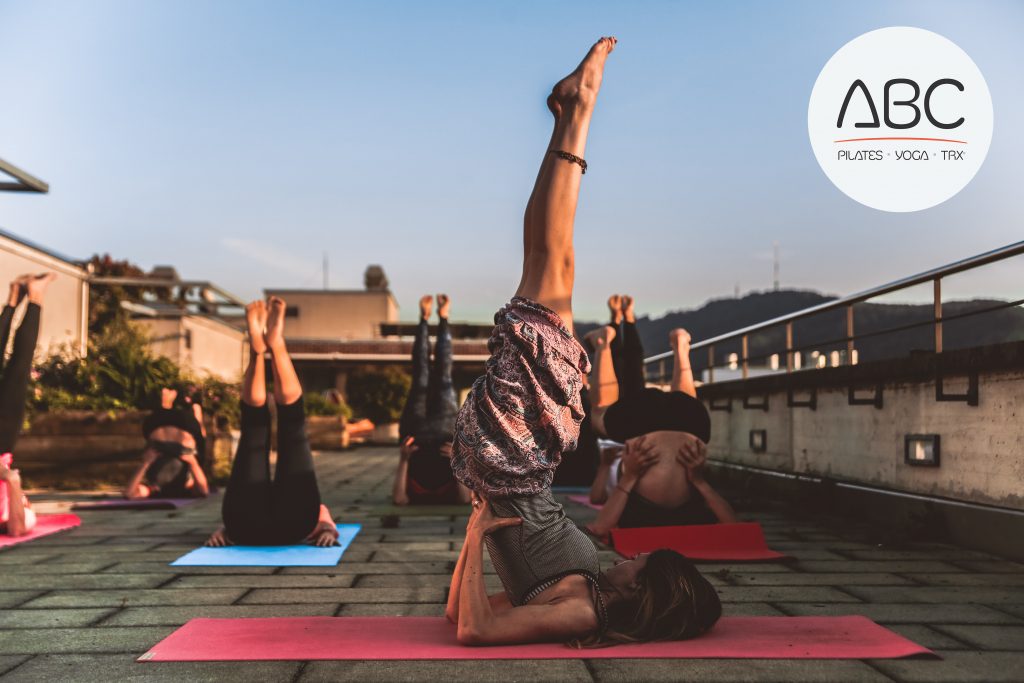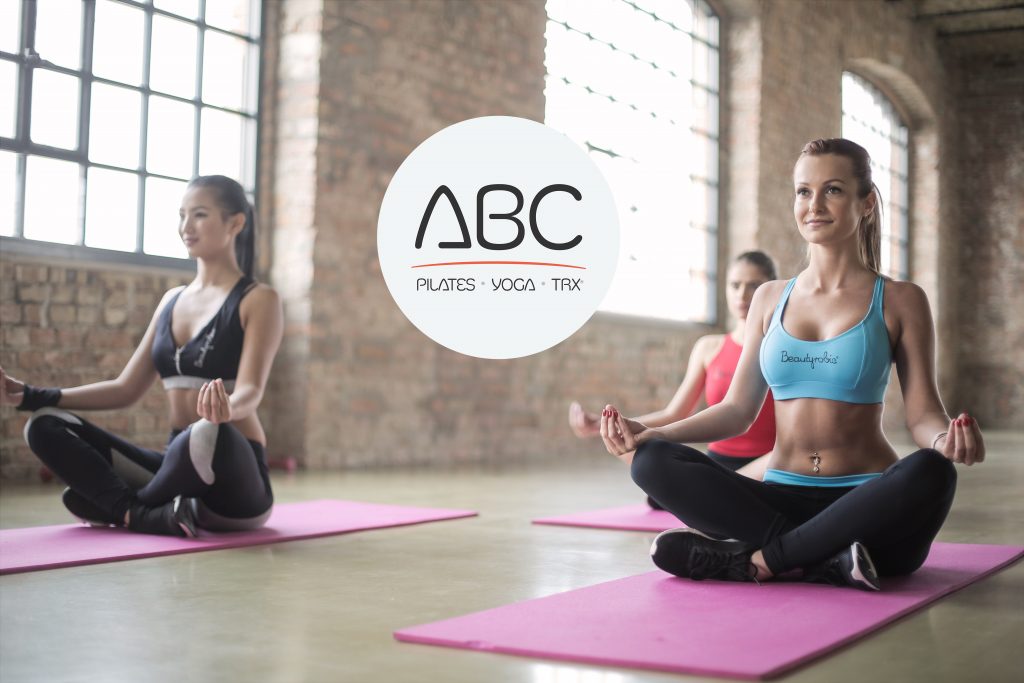Most people don’t know that yoga is helpful for people with IBD. (Research has even shown that practicing yoga may be beneficial in improving the quality of life for people who live with any chronic illness.) Find out more regarding studies that have been done on how yoga impacts IBD and how people with IBD can begin to incorporate yoga into their lives. Then come see us! We have a huge variety of classes and a welcoming, expert staff.
Taking part in regular yoga classes may help with some aspects of IBD
Health care professionals often recommend exercise for their patients who live with inflammatory bowel disease (IBD). However, people who have Crohn’s disease, ulcerative colitis, or indeterminate colitis may not know where to start or which type of exercise might be beneficial. Yoga is one type of exercise that may be helpful for people with IBD. Some research has shown that practicing yoga may be beneficial in improving the quality of life for people who live with chronic illness. This article will discuss the studies that have been done on how yoga impacts IBD and how people with IBD can begin to incorporate yoga into their lives.
About Yoga
Yoga is a physical and spiritual practice that began in India which has become popularized in Western countries. There are many types of yoga, but a few dozen are more widely practiced and a handful are quite popular. Some of the most popular forms include Bikram (hot yoga), Vinyasa (power yoga), and Kundalini, which incorporates spiritualism.
At the heart of the practice of yoga is strength and flexibility, which is achieved by taking the body through a series of poses. Depending on the type of yoga being practiced, as well as the instructor and the student, poses can be changed slowly or rapidly. The overall goal that many instructors work towards is to create balance in the body and to increase stamina.
Many people might think of yoga as being a gentle, and not a strenuous, form of exercise, but there are variations in how demanding the poses can be. Yoga can be adapted to accommodate a variety of health conditions and fitness levels, including for those with digestive disease. A qualified instructor can help develop poses that help with common digestive issues such as bloating or constipation. Some people with IBD may also live with irritable bowel syndrome (IBS), and bringing awareness to the muscles in the core through regular exercise can help in addressing IBS symptoms.
One component of the practice of yoga is in learning how to use the breath. Rhythmic or controlled breathing is a well-known technique that’s used to create a feeling of calm. At the beginning and the end of class especially, there may be special attention paid to the breath, poses that aid in relaxation, and mindfulness or meditation.
Yoga and Inflammatory Bowel Disease
Yoga may have some health benefits that include not only physical conditioning but also stress reduction. Some yoga poses are used specifically to target particular parts of the body, including the digestive system.
Living with a chronic illness such as IBD is associated with a certain amount of stress. IBD has also been associated with anxiety disorders and depression. For these reasons, yoga has been studied as a potential complementary treatment for Crohn’s disease and ulcerative colitis. While more large-scale research is needed, a few studies (see below) showed that regular participation in yoga may help improve quality of life for people with IBD.
Some of the extra-intestinal manifestations of IBD, such as joint pain, may also be addressed through regular exercise such as yoga. At least one study (see below) showed that people with ulcerative colitis who began yoga experienced less joint pain.
Another common problem for people who live with IBD or other digestive conditions is abdominal bloating or trapped gas. Some poses, most notably, the “wind relieving pose” which is achieved by lying on one’s back and bringing one knee to the chest, may be used to help with specific digestive issues. A qualified yoga instructor can help in identifying and recommending some gut-friendly poses into a yoga routine.
Getting Started With Yoga
There are several different types of yoga and choosing the right type and an instructor is going to be an individual decision. Yoga can be done at home, which is beneficial for people with IBD who aren’t able to go out to a class, but it’s usually recommended that beginners first take some classes with an instructor. A qualified instructor can help in establishing the basics of yoga and learning to perform poses correctly and effectively.
Starting any new activity brings a certain amount of anxiety, but starting with a beginners’ class should help in becoming more comfortable with yoga. Yoga studios will often have all the equipment that might be needed but many people choose to purchase their own yoga mat, especially if planning on practicing at home. Other equipment might include yoga straps, bolsters, or blocks. Yoga is done while barefoot but some people choose to wear socks with grips on them.
Yoga studios are a good place to take classes with instructors that will be experienced in assisting beginners. For people who already belong to a gym, it’s likely that there are yoga classes being taught there. Rec centers, senior centers, and libraries may also have yoga classes available.
The actual format of the class will differ based on the instructor and the style of yoga. However, most classes will have a general flow to them. Usually class will start with some breathing work before moving on to movements that increase in intensity. The last part of class will include stretching, more breathing exercises, some relaxation poses, and sometimes a chant.
It may be tempting to leave class before the end of the relaxation period but it is an important part of the process, particularly for those who are interested in yoga for promoting stress relief.
What the Research Shows
Study 1. One study was done on 100 people with IBD, 60 of whom were diagnosed with ulcerative colitis and 40 who were diagnosed with Crohn’s disease. The authors were looking at how stress and anxiety might be reduced through practicing yoga.
While stress and anxiety do not cause IBD, it is known that IBD is also associated with an increased risk of these conditions. Stress reduction is often a part of managing IBD and the authors of the study thought yoga might be helpful as a complementary treatment.
All the people included in the study were in clinical remission, which means that their symptoms of IBD were not active at the time. All patients stayed on the therapy there were already receiving to manage their disease. Half of the patients were randomly assigned an hour of yoga every day for eight weeks. The other half made no change to how they were managing their IBD.
In order to determine if the yoga was having any effect, the study authors tracked IBD symptoms as well as other factors that track inflammation in the body (this included cardiovascular autonomic functions, serum eosinophilic cationic protein, and interleukin- 2 soluble receptors). The authors also used a clinical scale called the Speilberger State Trait Anxiety Inventory (STAI) score, which tracks anxiety levels and helps determine if what a person is experiencing with their mental health is from anxiety or from depression.
Certain types of arthritis and joint pains are an extra-intestinal manifestation of IBD. After the eight weeks, fewer patients with ulcerative colitis reported that they had pain in their joints. Anxiety levels in patients with ulcerative colitis were also lessened, but there were no changes in the levels of any of the laboratory tests that were done. The authors also noted that patients in the control group, which did not take part in any yoga over the eight weeks, reported being in more pain.
Study 2. Another small study was done on nine teens who had IBD. The authors of the study wanted to see how practicing yoga regularly fit into people’s lives and how well it was received by patients. Over the course of eight weeks, the patients went to a one-hour yoga class three times a week at weeks 1, 3, and 8. They also did yoga three times a week at home with a half-hour yoga video.
The authors were tracking patients with a questionnaire called the Pediatric Ulcerative Colitis Activity Index (PUCAI), which measures disease activity. They gave the questionnaire to patients before the start of the program and again after. Another clinical scale, the PROMIS-37, was also used to track the mental and physical health of the participants. Finally, fecal calprotectin, a laboratory test that measures stool for compounds that are associated with inflammation, was also done on all the patients.
The teens liked the program but found it was difficult to complete all the yoga videos because they didn’t have enough time or had other priorities. Patients said that their stress was reduced and that it was easier to recognize and manage IBD symptoms, but the clinical scales that were used didn’t show any measurable differences. The authors concluded that yoga may be a good complementary therapy for teens with IBD but that bigger studies are needed to find out if it actually has any effect on disease activity.
Study 3. A study on 77 people with ulcerative colitis was done in order to see if yoga was safe and effective for people with ulcerative colitis. The patients included in this study were in clinical remission but they reported that their quality of life was impacted by their disease. Most of the patients in this study (75%) were women.
For 12 weeks, half of the patients went to a weekly, 90-minute yoga session. The other half of patients were given two books about ulcerative colitis that included information about the disease as well as how to manage it better with the use of lifestyle changes, medications, naturopathic, and integrative medicine.
The outcome was measured using a clinical scale called the Inflammatory Bowel Disease Questionnaire, which is designed to track quality of life. A secondary outcome was measuring actual disease activity, which was done using a scale called the Rachmilewitz clinical activity index. Patients were assessed at 12 weeks and again at 24 weeks.
At the end of 12 weeks, the researchers found that the group that was practicing yoga reported their quality of life was improved when compared to the group that received written self-care materials. This study did find a difference in disease activity; it was lower in the yoga group compared to the self-care group. The authors concluded that yoga was safe and effective for people with ulcerative colitis who are experiencing lower quality of life.
Precautions
Before starting a new exercise program, it’s important to talk to a gastroenterologist and/or other physicians. While it’s true that exercise is usually part of a healthy lifestyle, at certain points in the IBD journey, it may be necessary to avoid certain types of activities.
For instance, hot yoga, which takes place in a room that can be up to 104 degrees Fahrenheit, may not work well for those who get dehydrated easily or who might find that it shortens the wear time on an ostomy appliance. After abdominal surgery it might be necessary to avoid certain poses for a period of time until the surgeon says it’s time to get back to regular activity.
It’s also key to understand that while yoga might have some benefits, it’s not considered to be a treatment for IBD and a doctor should be consulted before making any changes to an IBD management plan.
Keeping these points in mind, yoga appears to be a beneficial activity for most people with IBD.
Reference: {https://www.verywellhealth.com/yoga-for-crohn-s-disease-or-ulcerative-colitis-4773609}

Looking to try something new and to belong to something spectacular? We have just what you need! Our space, instructors, and clientele are second to none! Come witness the benefits of pilates and yoga and watch your body (and your confidence!) transform!
Visit our Facebook page at https://www.facebook.com/theabcfitstudio or give us a call at 949.305.3310 to get started!



